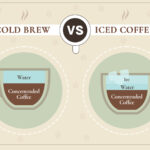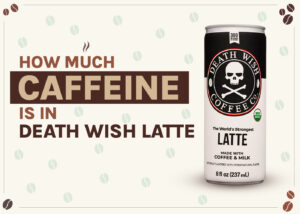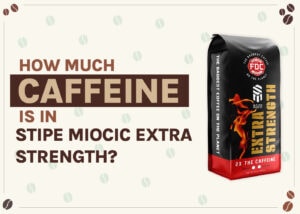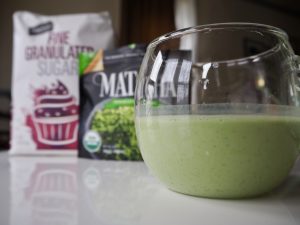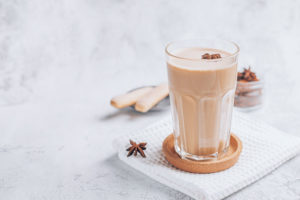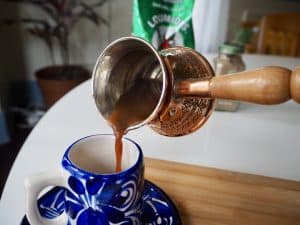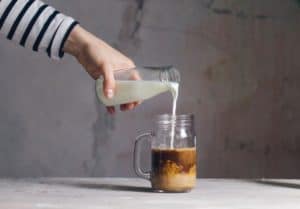
Everyone loves a little something sweet now and then. Even for those on the strictest of diets, denying yourself a bit of sugar is hard. This is especially true for people who like sodas and energy drinks. The sweet taste and caffeine boost provided by these little cans help keep us focused and energized throughout our days. Unfortunately, many of them are packed with high amounts of sugar.
According to the American Heart Association, a woman should only consume 6 teaspoons of sugar per day.1 A man’s consumption is slightly higher at 9 teaspoons. When it comes to our favorite drinks, however, some completely blow these recommendations away. Below you’ll find a comparison of the sugar found in our most beloved sodas and energy drinks. You may want to keep this information in mind the next time you pop the top on a can of your favorite sugary beverage.
Sugar in Leading Soda Brands
Sodas are often our go-to drink when navigating through our days. If you need a sweet treat or a boost of caffeine, grabbing a cold soft drink is like second nature. Unfortunately, however, there is a lot of sugar to be had inside these cans. Let’s take a look at the two top soda companies, The Coca-Cola Company and PepsiCo to learn more about the amounts of sugar they include in their most popular products.
Take a look at this comparison chart, which we’ll analyze in more detail below.
| The Coca-Cola Company | PepsiCo | ||||
| Name | Sugar Content | Can Size | Name | Sugar Content | Can Size |
| Coke | 37 grams | 12 oz. | Pepsi | 39 grams | 12 oz. |
| Diet Coke | 0 grams | 12 oz. | Mtn. Dew | 46 grams | 12 oz. |
| Cherry Coke | 42 grams | 12 oz. | Sierra Mist | 38 grams | 12 oz. |
1. The Coca-Cola Company

The Coca-Cola Company is headquartered in Atlanta, Georgia, and is possibly the best-known soda company in the world. With over 500 brands under their belt, it’s clear to see why the name and the company are so popular. Coca-Cola has a unique way of branding its soft drinks and trying to make them a part of people’s everyday lives. Commercials and slogans talk of making memories and connections, while images of smiling faces attempt to pull people in to become part of the Coca-Cola family.
Coke
Coke is the original recipe. Yes, through the years changes have been made to this formula, including flavorings such as Cherry and Vanilla, but classic Coke is still the one most people turn to. When it comes to the amount of sugar in the company’s main squeeze, you’ll find 37 grams per 12-ounce can. To make that easier to understand, it measures out to between 7.5 and 9.5 teaspoons of sugar per can.
Diet Coke
Diet Coke was the company’s answer to those who were worried about the sugar and calories found in other Coca-Cola Company products. While this drink has no sugars for you to worry about, it is important to understand more about the sweeteners used to give it a great taste. Artificial sweeteners are known to be associated with insulin resistance and possible type 2 diabetes.
Cherry Coke
Cherry Coke is known for its great taste. This is what makes it so popular. Unfortunately, when comparing the sugar content in a 12-ounce can to that of classic Coke, Cherry Coke leaves its namesake in the dust. Cherry Coke is intended to be sweet and tasty. The amount of sugar in the can is far above the recommended daily doses for adults.
2. PepsiCo

PepsiCo came into existence thanks to the merger of Pepsi-Cola and Frito-Lay. While they still produce the soft drinks that people around the world love, now many food items are also under their umbrella. With several popular drinks under its belt, PepsiCo is easily a main contender in the soft drink world.
Pepsi
As you can see, the original Pepsi has 39 grams of sugar in a 12-ounce can. This translates to roughly 10 teaspoons of sugar in one can. In comparison to classic Coke, this is slightly more. The sweetness of Pepsi is one reason many people find themselves leaning to this drink more often than Coke. The bitterness is lower and many call it more refreshing.
Mtn. Dew
Mtn. Dew is PepsiCo’s most popular soft drink. It is also one of the sweetest sodas on the market. With the popularity of this drink being so high, fans of this drink must understand the sugar content inside each can. You’ll find roughly 10-12 teaspoons of sugar inside a can of Mtn. Dew.
Sierra Mist
Sierra Mist is PepsiCo’s lemon-lime soda. Many love this drink due to its refreshing taste and bubbly effect. When looking at the sugar content in this drink, however, you’ll see it only has slightly less sugar than Pepsi. Like many of the other sodas on the list, it is still far above the daily recommended sugar amounts suggested for a healthy lifestyle.
Sugar in Leading Energy Drinks
When it comes to staying active, energy drinks are your best friend. As with sodas, however, there is more hidden inside each can that you’re aware of. Enjoying one energy drink a day will normally put you over your daily sugar recommendations, but how much?
Here’s a look at three of the world’s leading energy drink producers and the amounts of sugar they have in their most popular products.
| Red Bull | Monster Beverage Corp. | Rockstar Energy (PepsiCo) | ||||||
| Name | Sugar Content | Can Size | Name | Sugar Content | Can Size | Name | Sugar Content | Can Size |
| Red Bull* | 27 grams | 8.4 oz. | Monster Energy | 54 grams | 16 oz. | Rockstar Energy | 63 grams | 16 oz. |
| *All Red Bull flavors contain roughly the same sugar content in 8.4 oz. can. | NOS | 54 grams | 16 oz. | Rockstar Punched Energy + Guava | 83.5 grams | 16 oz. | ||
1. Red Bull

For years, people have been under the impression that Red Bull is owned by one of the leading soft drink manufacturers, The Coca-Cola Company or PepsiCo. This isn’t the case. Red Bull is a family-owned Austrian company that first introduced its energy drink as a way to counteract jet lag. Over the years, the company has faced criticism due to the high caffeine and sugar content found in its drinks.
Red Bull boasts that it is made of real sugars and that the sugar content is equal to that of a glass of orange or apple juice. While this may be acceptable and far less than the sugar found in its competitor’s drinks, keep in mind that the size of a Red Bull is smaller than most of the energy drinks you’ll find, and part of the reason for the lower sugar content.
While Red Bull features several flavors including watermelon, coconut, and dragon fruit, the sugar content is roughly the same across the board. The company does, however, offer a sugar-free version of its energy drink for those who want the caffeine boost without the added sugars.
2. Monster Beverage Corporation
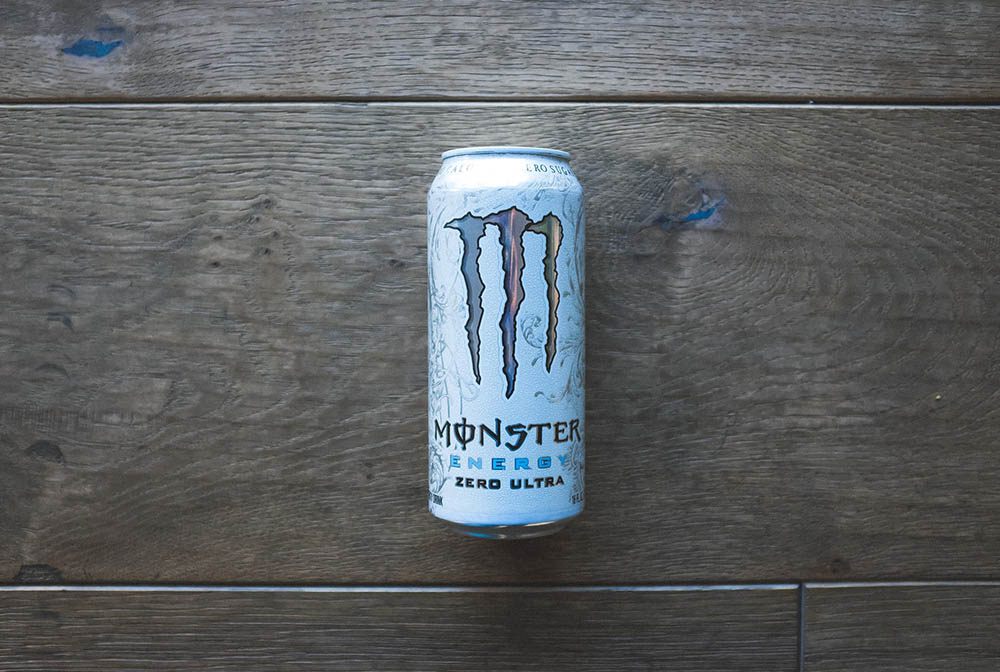
Originally named Hansen Natural Corp, Monster Beverage Corporation came into existence due to the overwhelming success of its flagship, Monster Energy. Like Red Bull, their biggest competition, Monster strives to give people a boost of energy when needed throughout the day. Where Monster gives Red Bull a run for its money is can size. Instead of a small can, like Red Bull, they offer customers larger sizes thus providing more of the energy people crave when choosing an energy drink.
The original Monster is clearly packed with sugar. When diving deeper into the levels inside, you’ll find 14 teaspoons of sugar in each can. This is almost double the amount of sugar recommended for daily intake. Thanks to the high levels of caffeine and sugar found in energy drinks like Monster, the company places labels on the cans stating who should avoid these types of drinks.
Once produced by The Coca-Cola Company, NOS became a part of the Monster Beverage Corporation when they garnered a deal with the soft drink giant. Like Monster Energy, NOS contains 54 grams of sugar, which is quite high.
3. Rockstar Energy (PepsiCo)
While you may not think of PepsiCo when talking about Rockstar Energy, you should. In 2020, the owners of Rockstar Energy sold their popular energy drink brand to the makers of Pepsi and Mtn. Dew. This sale brought one of the most sugar-packed energy drink brands under the control of the food and beverage giant and extended their reach even further.
Considered one of the least healthy drinks around, Rockstar Energy comes in with a mind-blowing 63 grams of sugar per serving. To visualize, this is 16 teaspoons of sugar in each can. While many find themselves concerned with the overall caffeine in drinks like Rockstar, it is often the sugar content that is the most dangerous.
If you want to see the true sugar power that can be packed in a 16-ounce can of Rockstar, try their Rockstar Punched Energy + Guava. This offering by the energy brand features 83.5 grams of sugar in one can. That is equal to 21 teaspoons of sugar each time you finish off 16-ounces of this sweet, energy powerhouse.
The Dangers of Sugar
All through our lives, we’ve heard about the dangers of too much sugar. As kids and teens, we’re told it’s bad for your acne and even worse for your teeth. The older we get, however, things change. Then we’re told sugar can lead to diseases like type 2 diabetes and heart disease.
While we may watch the sugary foods like chocolate, oftentimes we forget about the sugar found in our favorite drinks. As you can see from the chart above, some of our favorites are packed with the sweet stuff we love, which can make these drinks dangerous for us if we aren’t careful. Here’s a look at 3 of the potential dangers of too much sugar in our diets.
Obesity
Yes, obesity is a major concern when it comes to sugar. If you are a fan of soft drinks, energy drinks, and other sweet treats you may find yourself packing on extra pounds if you aren’t strict with your diet and workout routines.
Type 2 Diabetes
Managing type 2 diabetes can be difficult for anyone. While sodas and energy drinks aren’t always the culprit for people who suffer from this condition, they can be a contributing factor. An abundance of sugar often leads to obesity. Obesity is a huge contributor to type 2 diabetes. For those suffering from this condition, it is best to avoid sodas and energy drinks to keep your blood sugar levels under control.
Heart Disease
According to Healthline, the links between obesity, type 2 diabetes, heart disease, and sugary diets are evident. The more sugar you consume, the more likely you are to experience these issues. Unfortunately, heart disease is considered the number one cause of death worldwide.
Conclusion
Sugar is part of our daily lives. Whether it’s the sugar in an orange you have at breakfast or in a can of Mtn. Dew you enjoy with your lunch, it’s not going anywhere. When it comes to the sugars in the beverages we drink, it’s important to exercise caution. Whether you choose a Coke or a Rockstar, the levels are close to or above the recommended amounts you should consume each day. To keep yourself healthier, learn more about and pay close attention to what you’re drinking and the amount of sugar inside.
Featured Image Credit: Amanda Shepherd, Unsplash





